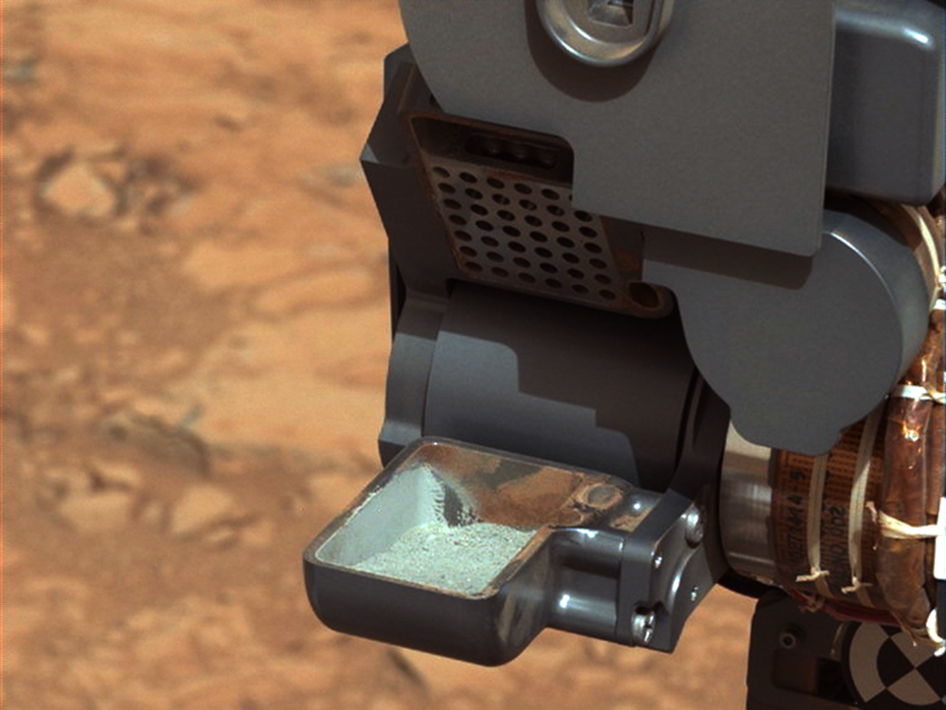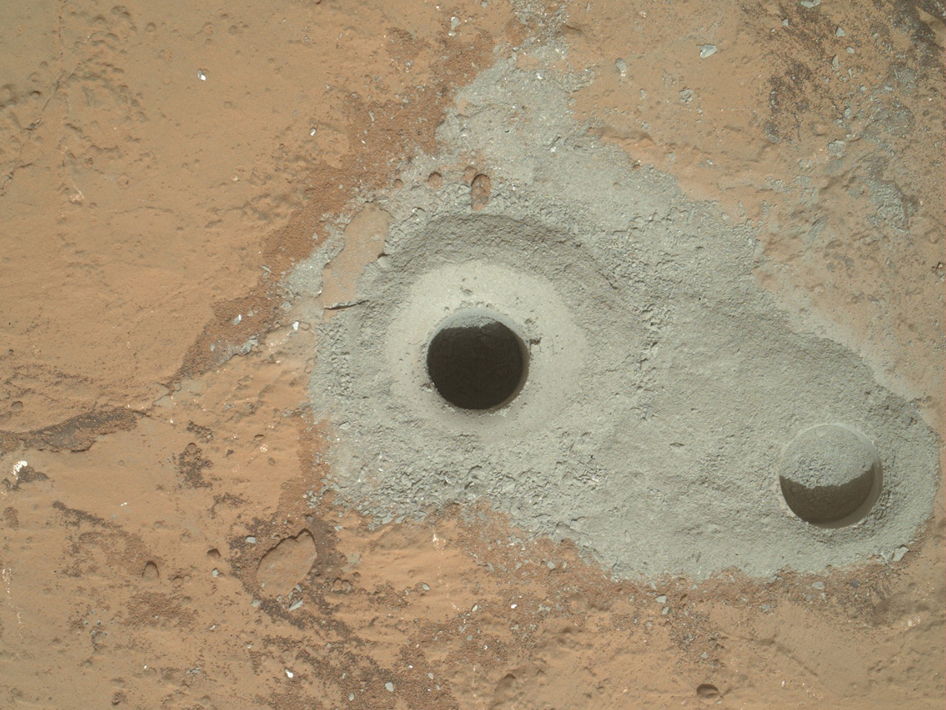
The Red Planet's signature color is only skin deep.
NASA's Mars rover Curiosity drilled 2.5 inches (6.4 centimeters) into a Red Planet outcrop called "John Klein" earlier this month, revealing rock that's decidedly gray rather than the familiar rusty orange of the Martian surface.
"We're sort of seeing a new coloration for Mars here, and it's an exciting one to us," Joel Hurowitz, sampling system scientist for Curiosity at NASA's Jet Propulsion Laboratory (JPL) in Pasadena, Calif., told reporters Wednesday (Feb. 20).
Mars gets its red coloration from a surface layer of dust that has undergone a rusting process, during which iron was oxidized.

Curiosity's hammering drill allows scientists to peer beneath that dusty veneer for the first time ever, and the early views at John Klein — where the rover performed its first full-up drilling and sample-collection operation — are intriguing, rover team members said.
The gray powder Curiosity collected "may preserve some indication of what iron was doing in these samples without the effect of some later oxidative process that would've rusted the rocks into this orange color that is sort of typical of Mars," Hurowitz said.
Curiosity landed inside the Red Planet's huge Gale Crater last August, kicking off a two-year prime mission to determine whether the area could ever have supported microbial life. The 1-ton rover carries 10 different science instruments and 17 cameras, along with other tools such as its arm-mounted, rock-boring drill.
Get the Space.com Newsletter
Breaking space news, the latest updates on rocket launches, skywatching events and more!
The drill was the last of Curiosity's gear to get vetted and tested on the Red Planet, and the rover team is thrilled that its first run went so smoothly.
"It's a real big turning point for us," said Curiosity lead scientist John Grotzinger, a geologist at Caltech in Pasadena.
Snagging rock powder from the depths of John Klein — which shows signs of long-ago exposure to liquid water — also cements Curiosity's place in the history books, rover team members said.
"This is the first time any robot, fixed or mobile, has drilled into a rock to collect a sample on Mars," said JPL's Louise Jandura, sample system chief engineer for Curiosity. "In fact, this is the first time any rover has drilled into a rock to collect a sample anywhere but on Earth."
Follow SPACE.com senior writer Mike Wall on Twitter @michaeldwall or SPACE.com @Spacedotcom. We're also on Facebook and Google+.

Join our Space Forums to keep talking space on the latest missions, night sky and more! And if you have a news tip, correction or comment, let us know at: community@space.com.

Michael Wall is a Senior Space Writer with Space.com and joined the team in 2010. He primarily covers exoplanets, spaceflight and military space, but has been known to dabble in the space art beat. His book about the search for alien life, "Out There," was published on Nov. 13, 2018. Before becoming a science writer, Michael worked as a herpetologist and wildlife biologist. He has a Ph.D. in evolutionary biology from the University of Sydney, Australia, a bachelor's degree from the University of Arizona, and a graduate certificate in science writing from the University of California, Santa Cruz. To find out what his latest project is, you can follow Michael on Twitter.









